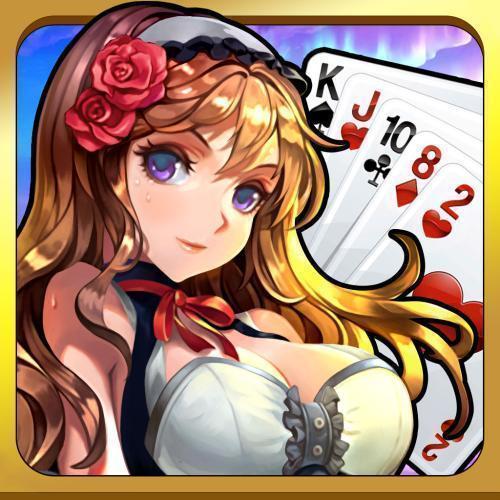
Kuangbiao Entertainment app (iOS version) offers players a wide variety of card and board game modes. Every player can participate and experience these entertaining games anytime. Download and try it out!
1. Tens of millions of players start a game simultaneously every day, playing cards online. Even playing cards late at night, there are no queues.
2. Participate in the game and receive surprises; it's super popular and worth using.
3. Players are allowed to freely enter the game in the arena with thousands of players, which allows for more betting and a higher chance of winning.
4. Become a VIP member and receive double rewards; new users receive rewards for logging in daily.
1. It offers authentic card and board game gameplay, restoring the classic offline rules, making it just as fun both online and offline!
2. Exquisite game graphics and fun voice effects make your matches more enjoyable and less boring!
3. Developed by a renowned game company, creating a green and fair gaming environment, allowing players to enjoy the game with peace of mind!
4. Create your own private room with one click, customize the multiplier and gameplay to your liking!
1. This game features a unique prize system where you can win many rewards, including exclusive physical items – don't miss out!
2. As long as players have enough time, making money by playing cards online is not a problem. There is a chance to become a tycoon, which is very convenient and easy.
3. The official version of Kuangbiao app offers a variety of gameplay options, all played by real players, so you don't have to worry about encountering bots.
4. Don't worry about cheating or running out of coins. The official team has already thought of this and set up a super-strong anti-cheating system.
1. The game has a low barrier to entry and more sessions, with different score levels to meet the needs of all users.
2. It integrates many classic competitive gameplay elements and various popular games to meet the needs of different users.
3. Register to receive a deluxe gift pack, featuring a variety of popular gameplay options that you can easily find at any time.
4. The overall game graphics are high-definition and realistic, and the game runs smoothly without lag, bringing players a refined gaming experience.
Shanxi Deduction Rules
1. Number of cards
The game uses a total of 136 tiles. These include: Wan (characters), Tong (circles), Tiao (bamboo), and Wind tiles.
2. Dingzhuang
The first player to enter the room becomes the dealer. The player who wins the current round then becomes the dealer for the next round. If the dealer wins, they remain the dealer. If the game ends in a draw, the player to the dealer's left becomes the dealer. (The player to the left is the dealer's upstream, and the player to the dealer's downstream is the dealer's downstream.)
• Select "One Round" for the number of rounds or check the "Add 5 Points with Banker" option for the gameplay. The banker rule is that the first player to enter the room becomes the banker. If the banker wins, they continue as the banker. If a non-banker wins, the player to the left of the banker becomes the banker. In the event of a draw, if there is a kong (four of a kind), the player to the left of the banker becomes the banker; if none of the four players have a kong, the banker remains the banker.
3. Desolate Village
If, during the game, no player wins after all the cards have been drawn, the game is considered a draw.
4. Reporting
The tiles from one of the "Wan" (characters) to nine of the "Tiao" (bamboo) represent points 1-9 respectively, while wind tiles are worth 10 points. A player can declare "ready to win" only if their hand contains tiles with a value of 6 or higher.
5. Winning the game
When a player wins, it means that one or two points cannot be won by self-draw or by discarding another player's winning hand; three, four, and five points can only be won by self-draw; and six points and above can be won by self-draw or by discarding another player's winning hand.
6. Passing through Hu
This refers to a situation where, after a player has stopped playing, another player discards the card they are waiting for. After the player chooses to discard the card, they can only win by drawing the winning tile themselves and cannot win by discarding the winning tile that another player discards.
7. Stealing the bar
When a player has already melded a tile and then draws the fourth tile to form a kong, if the player who is waiting for a winning hand happens to draw that tile, it is called "robbing the kong," resulting in a player winning by discarding the winning tile.
8. Dotted line
This refers to a situation where a player discards a card, and another player happens to have three of the same card in their hand. In this case, the discarding player can declare a Kong (or "kong"), which is also known as "eating a Kong".
9. Open bar
A kong (or exposed kong) is formed when a player draws the fourth tile after making a meld (pong).
10. Concealed kong
This refers to a player drawing four identical tiles, with one of the tiles in a concealed kong (杠) being face down so that other players cannot see it.
11. Drawing a tile after a Kong (or Kong)
This refers to the player drawing a card from the last stack of cards on the table after completing a meld (杠牌).
Basic gameplay
1. Special types of winning hands
Pure One Suit, Seven Pairs, One Dragon (double for discard win, quadruple for self-draw win), Golden Seven Pairs (quadruple for discard win, eight times for self-draw win), Deluxe Seven Pairs (eight times for discard win, sixteen times for self-draw win), Deluxe Golden Seven Pairs (sixteen times for discard win, thirty-two times for self-draw win).
2. Ready to win
One tile (of characters and dots) to nine tiles (of characters and dots) are worth 1 to 9 points respectively, and wind tiles are worth 10 points. A player can declare "ready to win" only if their winning hand is worth 6 points or more.
When you declare "ready hand," the tile you declared "ready hand" will be placed face down. You cannot change your tiles after declaring "ready hand." Regardless of whether you declare "ready hand" or not, the cost of a discarded tile or a kong is shared equally among the three players. (If you check the "[Cover the Kong for Discard]" option, whoever discards the tile will be responsible for the kong if you haven't declared "ready hand." If you have declared "ready hand," the cost of a discarded kong is shared equally among the three players. If you don't check the "[Cover the Kong for Discard]" option, you will be responsible for both the winning hand and the kong if you haven't declared "ready hand." If you don't check the "[Cover the Kong for Discard]" option, you will be responsible for both the winning hand and the kong if you discard the tile that allows the other player to win. If you don't check the "[Cover the Kong for Discard]" option, you will only be responsible for the winning hand if you haven't declared "ready hand.")
You can still kong after you have a ready hand (but if you change your ready hand and then kong, you cannot kong).
After a player is ready to declare a winning hand, the system will automatically play the tiles. If a player attempts to meld (kong), they can choose to do so or not. If a player attempts to win (hu), they can choose to win or pass on the winning hand. Once they choose to pass on the winning hand, they can only win by drawing the winning tile themselves. (If you check the "Guaranteed Win" option, the system will automatically win.)
3. Have a winning hand
When a player has three identical cards, and another player plays the fourth card, the system presents the options of "kong", "pong", or "pass". If the player chooses "pong" first, the player defaults to forfeiting the kong, and the system will not present the kong again. (If a concealed kong is passed on the first time, a prompt will be given each time.)
4. Integral Calculation
When multiple players win with a single tile, the order of winning proceeds counter-clockwise, with the player closest to the winning tile having priority. If the player closest to the winning tile passes, then it is the next player's turn to win.
One of the tiles (characters and dots) to nine of the tiles (characters and dots) are worth 1 to 9 points respectively. Wind tiles (East, South, West, North, Center, Fortune, White) are worth 10 points. The points for winning and konging tiles are the same as the points of the tiles.
Self-draw and concealed kong scores are multiplied by 2 respectively.
Not reported: The player who discards the winning tile is responsible for the winning hand; The player who discards the winning tile shares the winnings equally among all three players; Selecting "The player who discards the winning tile is responsible for the winning tile" means the player who discards the winning tile is responsible for the winning tile; Selecting "The player who discards the winning tile is responsible for the winning tile and the winning tile" means the player who discards the winning tile is responsible for the winning hand and the winning tile.
After hearing the report: the cost of firing a cannon is shared equally among the three parties; the cost of firing a block is shared equally among the three parties.
(1) Special card types
All of the above, seven pairs, golden seven pairs, and a straight flush without any bonus.
(2) Ready hand
Randomly select one card as the mouse. The mouse can substitute for any card.
After a player is ready to declare a winning hand, the system will automatically play the tiles. If a player attempts to meld (kong), they can choose to kong or not. If a player is ready to win (hu), they can choose to win or pass on the winning hand. Once they choose to pass on the winning hand, they can only win by drawing the winning tile themselves. (If you check the "Guaranteed Win" option, the system will automatically win.)
(3) Crossing the bar
If you have three identical cards in your hand, and another player plays the fourth card, the system will display the options "Kong", "Pong", or "Pass". If you choose "Pong" first, you will automatically forfeit the Kong, and the system will not display Kong again. (If you choose "Pass" for a concealed Kong on the first play, you will be prompted every time.)
(4) Mouse Beard
The winning hand can have multiple possible points. If the discarded tile is a "rat" tile, you cannot win. A rat tile can be drawn by yourself, and when you draw a rat tile, the score is calculated based on the highest possible winning hand.
5. Integral Calculation
One tile (of characters and dots) to nine tiles (of characters and dots) are worth 1 to 9 points respectively, wind tiles are worth 10 points, and the points for winning and konging are the same as the points of the tiles. Self-draw and concealed kong are worth 2 points each.
After declaring "ready to win," the possible winning hand points are not unique. When drawing a "rat" (a tile that has been drawn by oneself), the highest point value is used for scoring.
Special hand types (pure suit, straight, seven pairs) do not double.
Related Articles

Video playback|0people downloaded
View Details
Video playback|0people downloaded
View Details
Card games|0people downloaded
View Details
Card games|0people downloaded
View Details
Card games|0people downloaded
View Details
Card games|0people downloaded
View Details
Card games|0people downloaded
View Details
Card games|0people downloaded
View Details
Card games|0people downloaded
View Details
Card games|0people downloaded
View Details